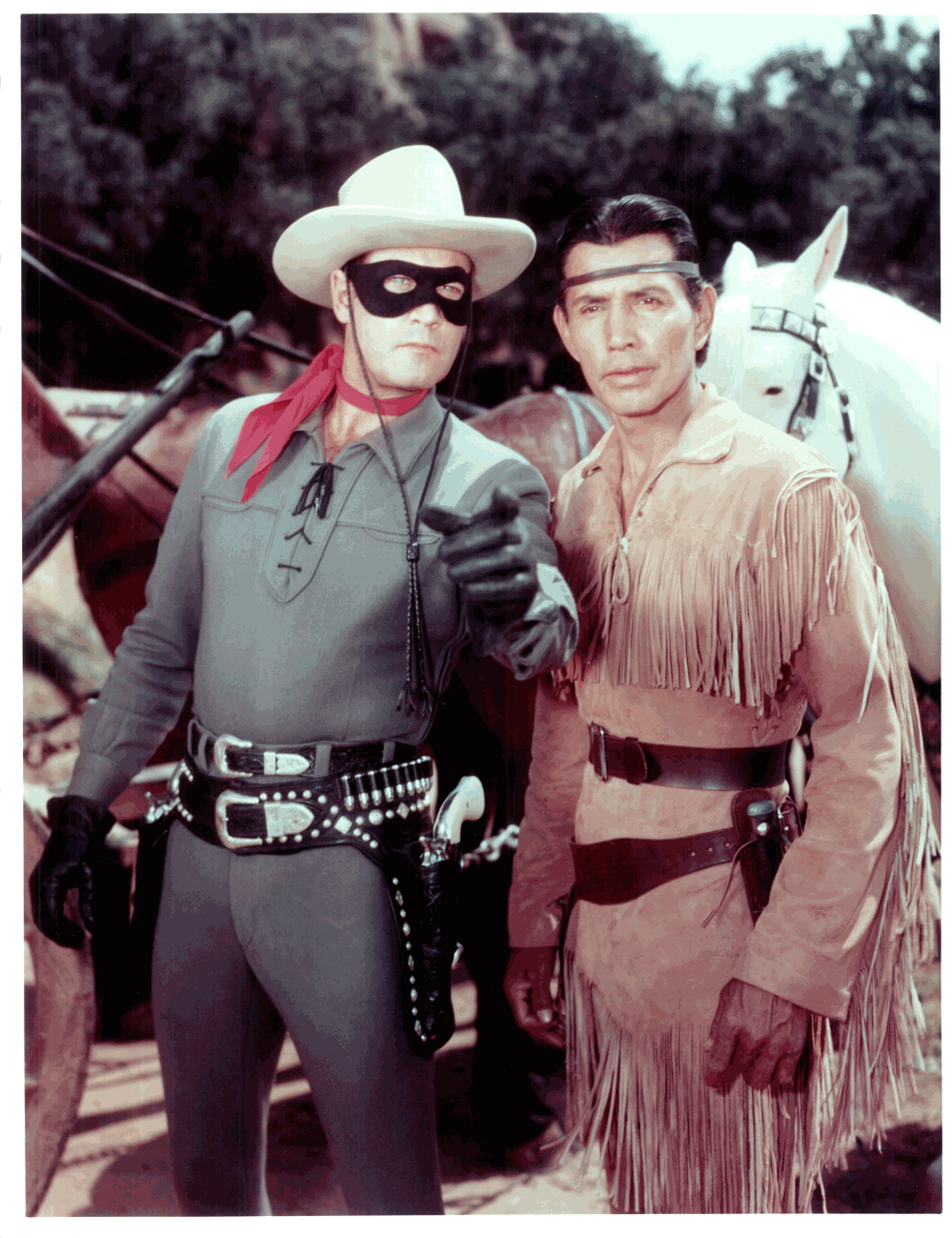The legend of the Lone Ranger was born on Detroit radio station WXYZ in January 1933, the product of station owner George W. Trendle and writer Fran Striker. The program was a success from the start, and within a year was also being heard on WGN in Chicago and WOR in New York--in effect forming the nucleus of the new Mutual network.
By 1937, “Hi-Yo Silver!” was echoing nationwide. Initially sustained by the station, the program was sponsored by Silver Cup bread starting in November 1933. Bond bread took over as sponsor in 1939 except in the Southeast states, where Merita bread retained its franchise.
General Mills became the sponsor in 1941, tying the masked rider to such cereals as Kix and Wheaties until the radio series went off the air in 1955. Cheerios sponsored rebroadcasts until 1956, ending some 23 years and over 3,000 episodes of Western radio thrills and adventure.
Jack Deeds was the first actor to play the Lone Ranger, but only for the first six broadcasts. George Stenius, later a movie producer under the name George Seaton, assumed the role for the next three months. When Stenius quit, WXYZ station manager Brace Beemer took over the role for a few months, but then he left to open an advertising agency.
Finally, in May 1933, Earl Graser became the Lone Ranger voice and he continued the role until his death in 1941. At this point, Brace Beemer was recruited to return to the role. He played the part from 1941 to 1955 and became the voice most closely associated with the character.
On television, the Lone Ranger rode for more than 30 years on the networks and in syndication. The series, sponsored by General Mills (and Merita bread), premiered on ABC in 1949 and aired in prime time until 1957. Reruns were shown on all three networks: CBS (1953-1960 and 1966-1969), ABC (1957-1961 and 1965), and NBC (1960-1961). Syndication began in 1961. Clayton Moore (1914-1999) played the lead for most of the series (John Hart covered the years 1952-1954) and Jay Silverheels (1919-1980), a Mohawk Indian, was Tonto, his faithful companion.
Republic Pictures released two 15-episode chapter plays, The Lone Ranger (1938), with Lee Powell as the lead, and The Lone Ranger Rides Again (1939), with Robert Livingston. Wrather Productions made three full-length films, The Lone Ranger (1955) and The Lone Ranger and the Lost City of Gold (1958), both with Clayton Moore and Jay Silverheels, and The Legend of the Lone Ranger (1981), with Klinton Spilsbury and Michael Horse.
A Saturday morning animated Lone Ranger series aired on CBS from 1966 to 1969, with the Ranger and Tonto battling mad scientists as well as conventional Western villains. The animated defenders of law and order surfaced again on CBS in 1980-1981 as part of The Tarzan/Lone Ranger Adventure Hour.
A Sunday comic strip distributed by King Features appeared from 1938 to 1971 and was revived from 1981 to 1984, one of the longest running of the Western strips. Charles Flanders took over the strip from Ed Kresse in 1939 and continued as the main daily and Sunday artist until the mid-1960s. Comic books, including giveaways, novels, coloring books, photo albums, and scrapbooks appeared in great numbers from the 1940s on. Artist Tom Gill did most of the interior story art for the comic books in the 1950s-60s; Don Spaulding painted some of the classic 1950s covers.
Younger incarnations of the Lone Ranger and Tonto failed to make a go of it in a WB television pilot aired in 2002. A new comic book incarnation of the masked man started in 2006 from Dynamite Entertainment. The new movie on the way seems cringe-worthy, but we're hoping we're wrong. We doubt we are, but we're hoping...
It would be hard to overestimate the number of items licensed and merchandised in the name of the Lone Ranger, especially during the years the program ruled the air on radio and television. Items may be copyrighted by Lone Ranger Inc., Lone Ranger Television Inc., or, starting in 1954, Wrather Corp.


